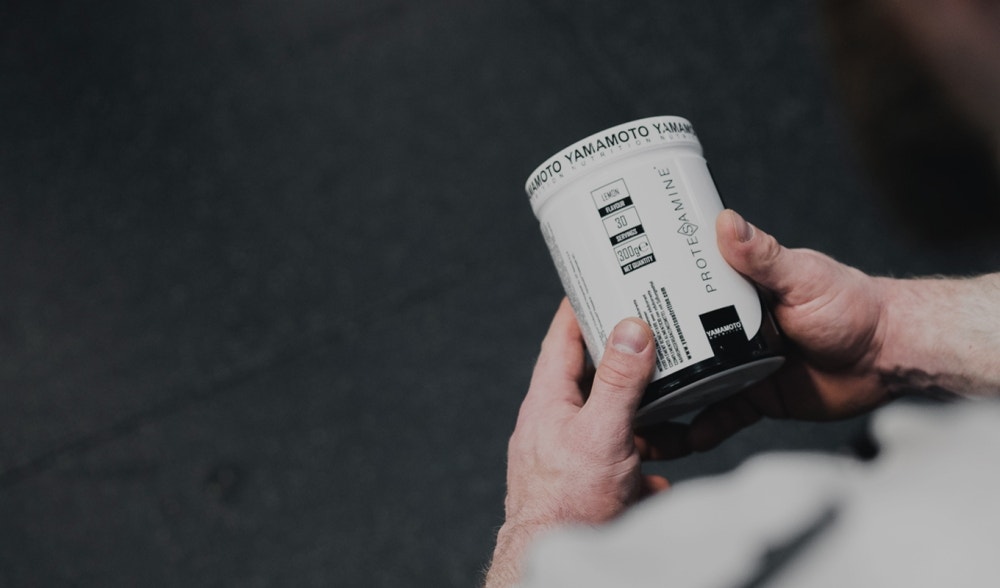MCU-20® Yamamoto® is the innovative supplement formulation that guarantees the assimilation of 100% of the active ingredients
MCU-20® was developed by Yamamoto® Laboratories to maximise the transport and absorption of active ingredients in supplements. The goal, in fact, is to reach the target unharmed, to the best of the bioavailability of the elements and in order to optimize the effect.
Microencapsulation is a technology already known and present in the world of food and pharmaceuticals and today it has allowed an important turning point: it has allowed the overcoming of limits that affected the bioavailability of many molecules in the world of food supplementation.
We know that many raw materials, commonly used in the world of supplements, have limits of various kinds, for example, they can undergo degradation in the gastrointestinal tract due to "environmental" conditions or the poor solubility of the material (which can form precipitates that cannot be fully absorbed). This means waste of raw materials and active ingredients, in the face of a corresponding not indifferent economic waste for the final consumer.
Microencapsulation: how it is born
The microencapsulation technology was born in the mid-20s of the Twentieth Century and the first applications concerned the microencapsulation of oils with acacia gum and gelatin through the coacervation process.
In 1955 came the first great success, from the industrial point of view, of the microencapsulation technology, since a process of coacervation of the gelatin able to encapsulate a pigment was patented. Specifically, the well-known "carbonless" paper was born in which the microcapsules obtained are stuck on the surface of a sheet and, with the pressure of the writing exerted on the sheet itself, the thin gelatin wall of the microcapsules is broken and the pigment is released which is fixed on the sheet below.
From this first great success of microencapsulation, there was an exponential development of technology both in the food sector and in the cosmetic, chemical, electronic and pharmaceutical fields.
Microencapsulation: the benefits
Thanks to microencapsulation it is possible to change:
- Color;
- Shape;
- Volume;
- Solubility.
This means, in practice, that thanks to this technology it is possible:
- Transforming a liquid substance into a solid : from a liquid it is therefore possible to obtain a powder with the characteristics of the polymer used for encapsulation, therefore, the powder is defined as pseudo-solid.
- Reduce volatility : thanks to microencapsulation, an extremely volatile substance can be trapped in a particle system that can be stored for long periods of time.
- Change the volume and density : microcapsules with high air content can be specifically created, in order to generate substances capable of floating in water or in air.
- Increased stability : since the microencapsulation protects the substances trapped by environmental agents, this guarantees greater stability of the contents.
- Masking of unpleasant odors and tastes
- Obtaining controlled release systems : the control of the release system of the contents of the microcapsule is possible thanks to the polymers used for the microencapsulation itself.
Of course, the polymers used for microencapsulation are different depending on the purpose.

MCU-20® Yamamoto®: the new era of supplements
Specifically, what are the benefits of microencapsulation technology applied to supplements?
Let's take an example: thanks to the MCU-20® microencapsulation of Yamamoto®, the amino acids, characterized by a low solubility and stability in water, can be made quickly and completely soluble without forming precipitates: this means an absorption higher than the standard in quantitative terms and qualitative.
This improvement, of course, has a direct impact on the quality of the performance of the consumer who really gets the support necessary and required by the ingestion of the supplement.
There are many other raw materials, typical of sports supplementation, which have oral absorption limits: the best known are creatine, l-carnitine and arginine.
What therefore happens with the Yamamoto® MCU-20® microencapsulation technology , is that even the elements defined as "poorly absorbed" can demonstrate their effectiveness by bypassing environmental chemical or enzymatic limits, providing a protective and transport carrier to the small microparticles. which will reach a unique bioavailability .
Why choose MCU-20® Yamamoto®
Because it is the only formulation currently available that can guarantee you the complete and effective assimilation of the active ingredients indicated on the label, therefore, in addition to really offering you 100% of the benefits, it also makes you save!
BIBLIOGRAPHY
M.N. Singh, K.S.Y. Hemant, M. Ram, and H.G. Shivakumar. Microencapsulation: A promising technique for controlled drug delivery. Res.Pharm Sci 2010 65-77.
Eskildesen Pagano A.P. et al. Microencapsulation of betanin in monodisperse W/O/W emulsions. Comparative Study-Food. Res. Int. 2018 Jul.
Katarzyna Hoppe and Małgorzata Sznitowska. The Effect of Polysorbate 20 on Solubility and Stability of Candesartan Cilexetil. AAPS PharmSciTech, Vol. 15, No. 5, October 2014.
True L. Rogers & Dave Wallick. Reviewing the use of ethylcellulose, methylcellulose and hypromellose in microencapsulation. Part 1: materials used to formulate microcapsules. Drug Development and Industrial Pharmacy, 14 Sep 2011.
Gibbs, B. F., Kermasha, S, Ali, I and Mulligan, C. N. 1999. Encapsulation in the food industry: a review. International Journal of Food Science and Nutrition. 50:213–224.
Gouin, S. 2004. Microencapsulation: Industrial appraisal of existing technologies and trends. Trends in Food Science Technology. 15: 330–347.


Comments
Write a comment about the article